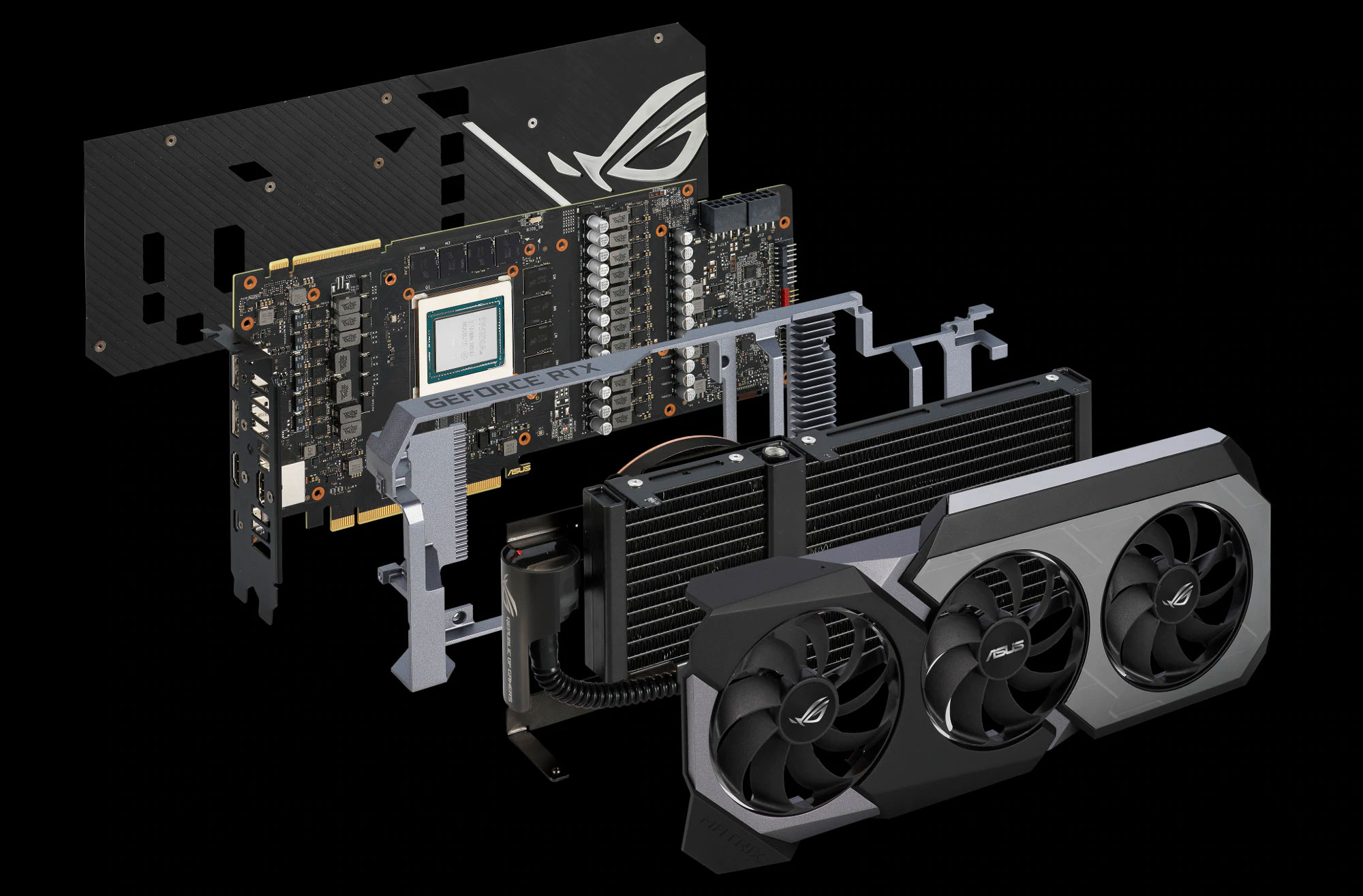Asus squeezed an all-in-one liquid cooler into a three-slot graphics card
There's no radiator to mount or external plumbing.

Until now, all of the best graphics cards that have come with their own all-in-one liquid cooling setup required mounting the plumbing hardware to your case, typically in the rear or up top. Asus, however, unveiled a GeForce RTX 2080 Ti model at CES that fully integrates the plumbing inside the card itself.
The ROG Matrix GeForce RTX 2080 Ti takes up three slots, which is becoming more common on custom cooled cards these days. But while it looks like a thick graphics card with a burly air cooler attached, both the radiator and pump are underneath the shroud, along with the tubing.
It took a bit of engineering and a few different prototypes to end up at the final result.
"We initially experimented with an external 120mm radiator and were pleased with the resulting temperature reduction. Unfortunately, the cooler was too big and unwieldy to squeeze into smaller systems, especially when paired with similar liquid cooling for the CPU," Asus explains.
"We turned our attention to putting everything on the card and developed a prototype that used a large skived heatsink pierced by coolant-filled copper pipes. The size was more manageable, but temperatures were 10C higher, so we went back to the drawing board," Asus says.
The next prototype was a "four-slot beast," which Asus figured was "too big to be practical as a finished product." However, the design showed promise, and ultimately Asus was able to shave the design down to a three-slot card.

Asus says the biggest barrier was the pump. The company experimented with different positions and found that it made the most sense to create a smaller custom pump that sits off to the side.
The biggest gaming news, reviews and hardware deals
Keep up to date with the most important stories and the best deals, as picked by the PC Gamer team.
"This placement ensures that the pump performs well in a variety of systems and orientations with the exception of rare cases that mount cards vertically, with the I/O ports facing up. When the pump is at the top of the loop, bubbles can infiltrate the coolant and slowly degrade cooling performance over time," Asus says.
In total, Asus said it created "more than five prototypes" with help from various industry partners (so we supposed that means six?). According to Asus, the final design nearly matches the cooling performance of cards that are attached to larger 240mm radiators. For users who have the requisite coin, Asus says it's safe to install two of these cards right alongside each other in SLI.

The card has an OC mode, which cranks the boost clock to 1,815MHz. That's 150MHz over the company's regular Strix model, and 180MHz faster than Nvidia's overclocked Founders Edition model (and 270MHz over reference). Additionally, the 11GB of GDDR6 memory is clocked at 1,480Gbps, up from 1,400Gbps on both reference and FE models.
"These upgrades come with a higher 300W TDP, but the cooler has no problem handling the additional heat. The Matrix RTX 2080 Ti runs 7C cooler than the Strix at the same noise and power level, despite offering better performance," Asus says.
This is an impressive product from an engineering standpoint, and undoubtedly it will cost a pretty penny. Asus didn't announce pricing, but we suspect it will cost quite a bit more than a standard GeForce RTX 2080 Ti. Part of the up-charge obviously goes towards the integrated cooling, though these cards also sport cherry-picked GPUs and PCBs. Asus says only 5 percent of the cards it tests pass muster for Matrix consideration, "yielding our most exclusive GeForce RTX model yet."
The ROG Matrix GeForce RTX 2080 Ti will start shipping next month.
Paul has been playing PC games and raking his knuckles on computer hardware since the Commodore 64. He does not have any tattoos, but thinks it would be cool to get one that reads LOAD"*",8,1. In his off time, he rides motorcycles and wrestles alligators (only one of those is true).


